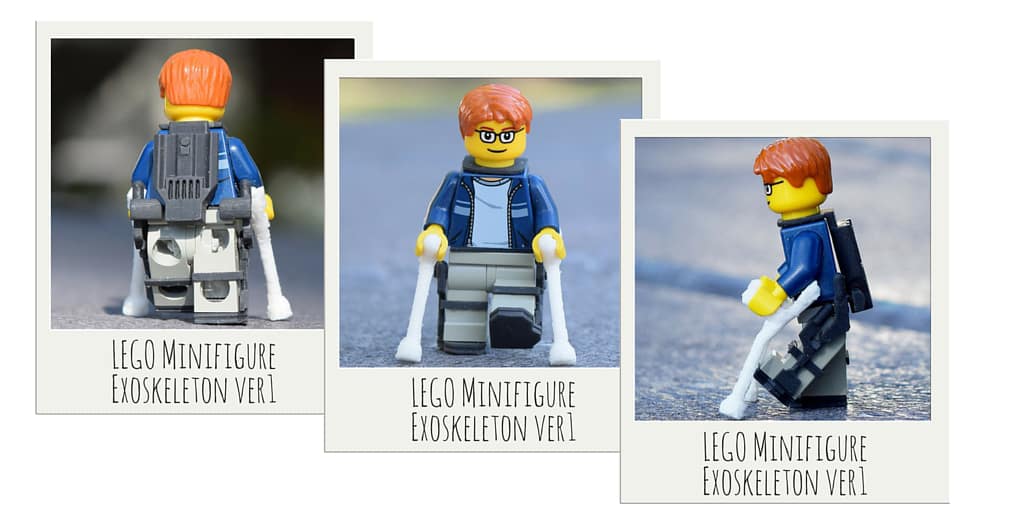This June the LEGO Group released its first minifigure wheelchair. The wheelchair comes in set 60134 Fun in the Park – City People Pack. This is a huge development for the LEGO Group and people with disabilities. In all fairness, LEGO already has a DUPLO scale wheelchair piece, but it is still surprising that it took the company so long to make one for the standard minifigure seale. The first modern LEGO minifigure was made in 1978 (wiki), or 38 years ago. Since then, there have been multiple hospital and other medical related sets which have given the company the opportunity to release a wheelchair or other walking disability aids.

While the response on the internet has been tremendously positive, there have been those that have written that the LEGO minifigure wheelchair is completely unnecessary because you can build one yourself. According to some, having a wheelchair accessory piece would stifle creativity. To this I say, nonsense!
The first LEGO minifigure wheelchair is really important because it:
- makes disability socially acceptable
- reduces the stigma of having a mobility impairment
- makes the LEGO world more inclusive
- opens the path to assistive & rehabilitation technologies (such as exoskeletons)
Disability is not socially acceptable:
People with disability or impairments are rarely featured in the media and this is also reflected in the toy industry. This has a direct impact on the exoskeleton industry. If you look at commercials on TV, they always show young, hip and active people happily using the product that is being advertised. Cell phones for active people, fast food being eaten by young attractive folks, computers being used by supermodel businessmen. The message we get is that if you are disabled, stay at home.
This has made proliferating medical exoskeleton technology very difficult. If people don’t want to talk about their mortality or how quickly they can lose their mobility in just a single accident, then they certainly don’t want to talk about technology that reminds them of it. Talking about medical exoskeletons requires us to think about all of the millions of people that are not perfect and have severe injuries and impairments.
There are many people that suffer from mobility impairments. More than enough to justify the LEGO Group and other toy companies to include mobility aids such as canes, crutches, walkers and wheelchairs. A study was brought to my attention which shows that an estimated 19 million people in the US (10% of the population at the time) suffer from some level of mobility difficulty. Furthermore, mobility challenges were not limited to just the aging population.
Having a LEGO minifigure wheelchair shows that the world is no longer willing to pretend that people with mobility impairments don’t exist. The LEGO brand has been on a journey to become more inclusive by including minifigures of all races and cultures. This is a new step for them to make their brand more accessible and relatable to millions of kids and adult collectors all over the world.

The introduction of a LEGO minifigure wheelchair opens the doors to a LEGO minifigure exoskeleton. It is now possible to imagine a set in the future that could be a rehabilitation center filled with miniature medical exos and training machines. Or perhaps a concert set that has an audience member with an exoskeleton and a spotter that accompanies them. And if we can imagine this then it is also plausible to have future construction and railroad sets with industrial exoskeletons fitted on some of the LEGO workers.

The LEGO minifigure wheelchair is a step forward for the LEGO Group and indirectly the exoskeleton industry. It brings out of the shadows the millions of people with movement disabilities that have to temporarily or permanently use a wheelchair. Interestingly, it also highlights that after all of these technological advantages over the years what we have to offer a LEGO minifigure is a wheelchair, an invention that is now more than a thousand years old.
As Dr. Hugh Herr likes to always say: “there’s no such thing as a disabled person there’s only disabled technologies.” The LEGO minifigure exoskeleton featured here is a first revision prototype based on the Ekso GT. The Ekso GT by Ekso Bionics is designed as a rehabilitation wearable robot and not an augmentation one to be taken home or to parties. The pronounced knee and hip motors however, made it a more attractive shape to sculpt.
Sources:
Mobility Difficulties Are Not Only a Problem of Old Age, Lisa I. Lezzoni, MD, MSc, Ellen P. McCarthy, PhD, Roger B. Davis, ScD, Hillary Siebens, MD, J Gen Intern Med 2001;16:235-243








Add Comment